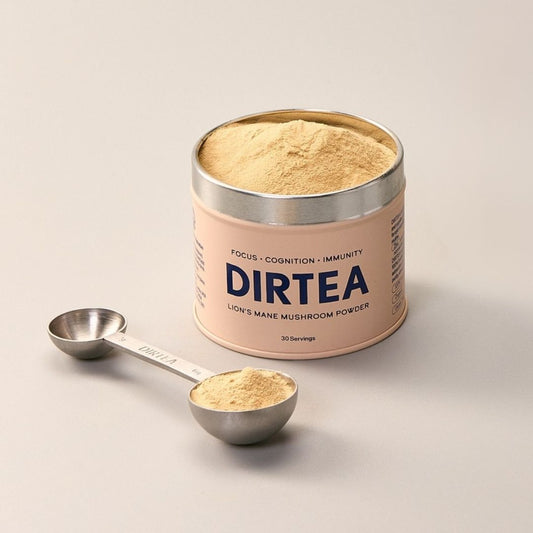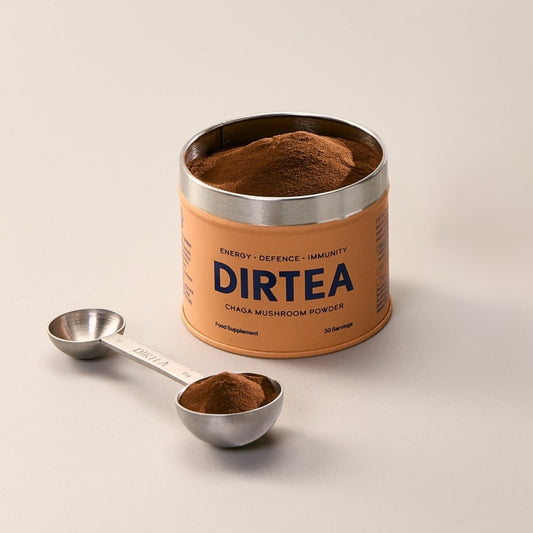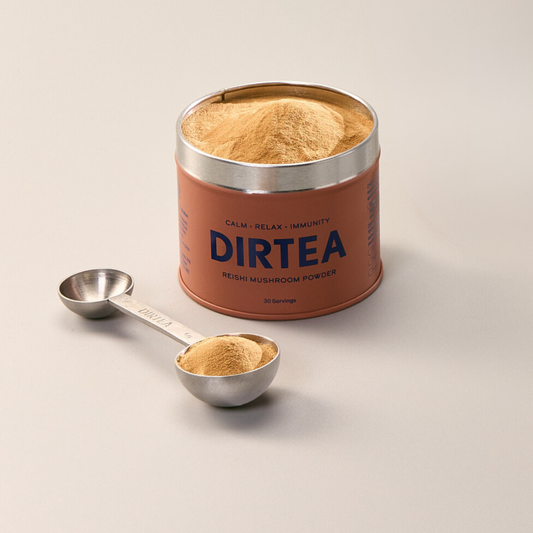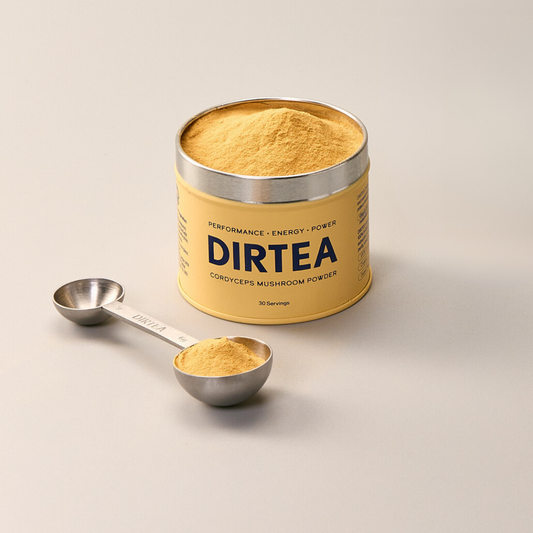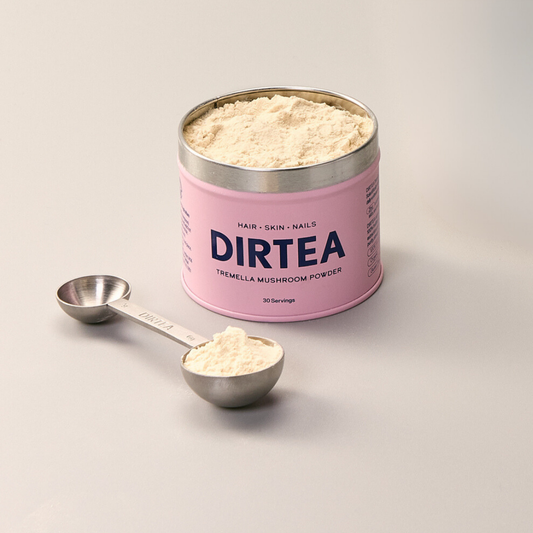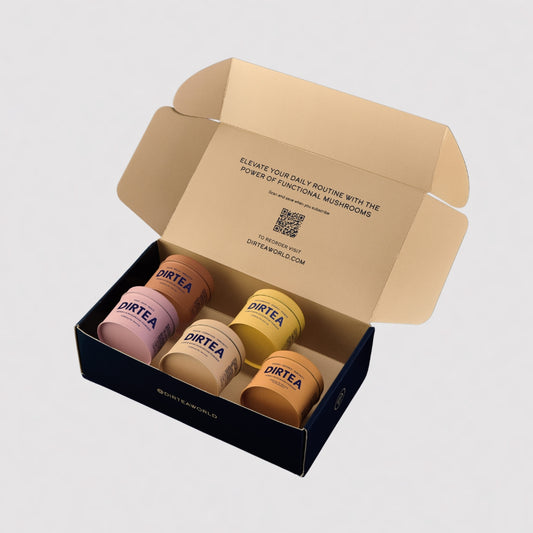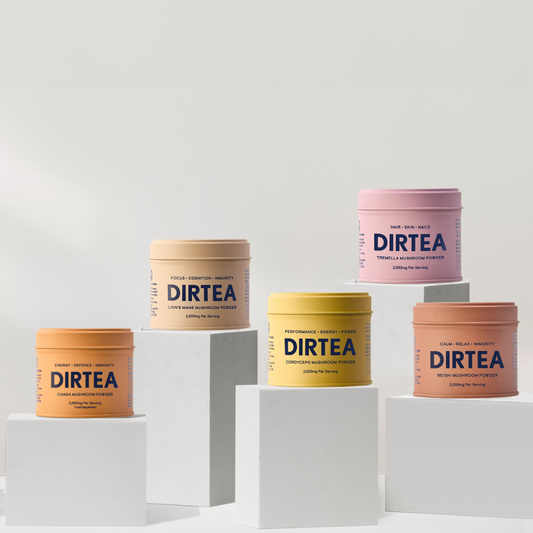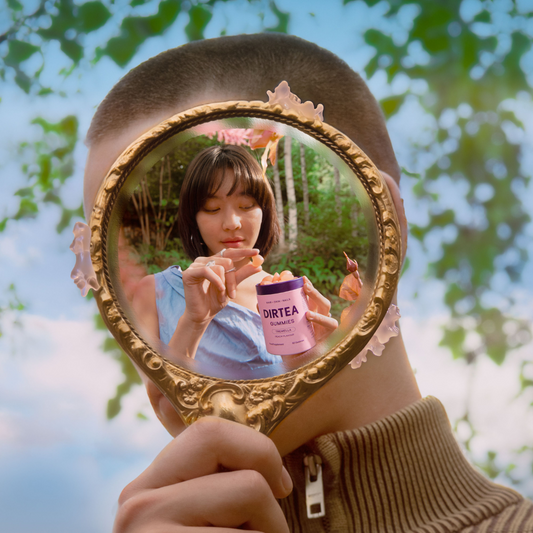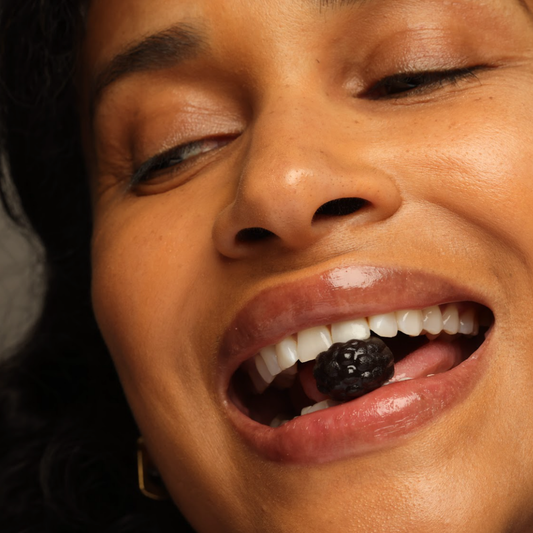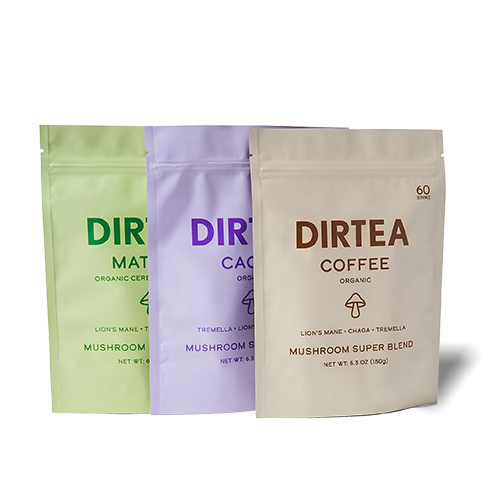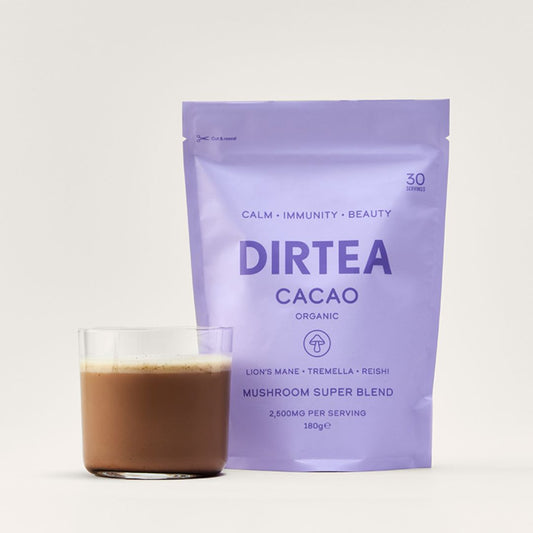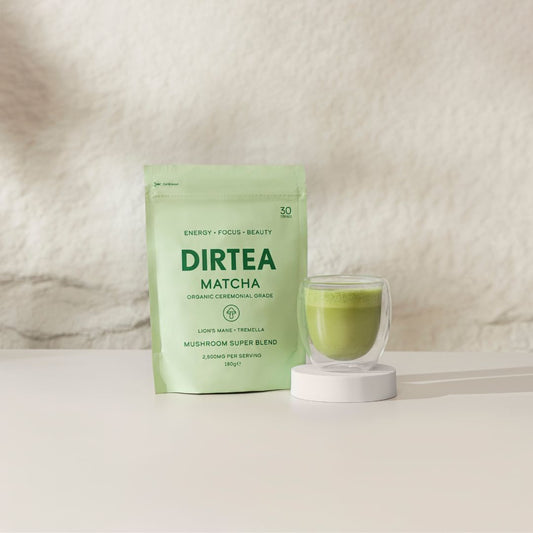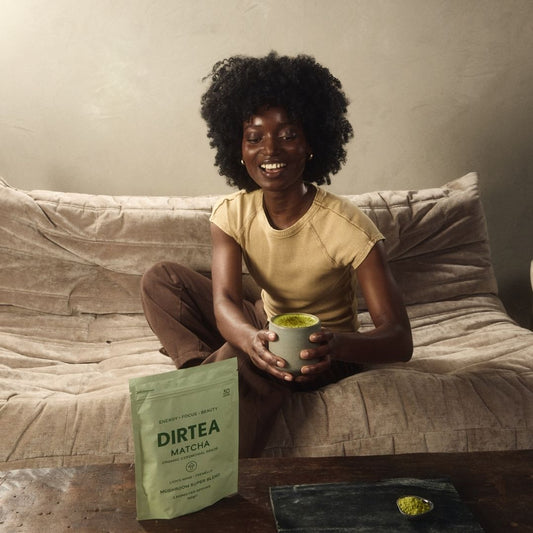Mushrooms For Sleep: 6 Steps to Help Improve Your Sleep
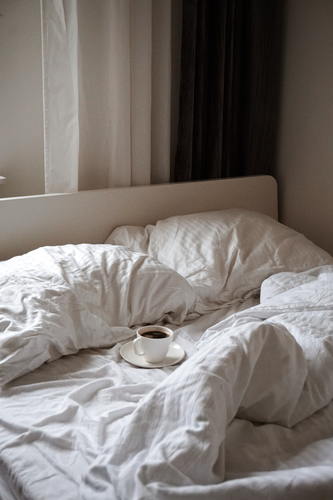
Share
The best thing you can do for your sleep is have an evening routine.
In this post, I want to share mine.
For the last 2 years, I’ve been studying the principles of sleep and waking rituals. It’s part of my long pursuit to understand how I can help my body feel strong, fresh, and energised.
So if your sleep is fitful and low-quality, or if you simply want some more tools in your arsenal, I’ve got you covered.
And you may be surprised to learn about mushrooms for sleep and how they can help – particularly Reishi mushrooms for sleep.
Disclaimer: I’m no scientist. And I’m no sleep specialist. Nor will I drop big scientific terms. I’ll keep it simple. My aim is to simply hand you the tools to commence your restful sleep.
Does This Sound Like You?
You’ve completed your work day. You skipped your lunchtime walk and have faced fluorescent light for eight solid hours.
The day is closing in. It’s 6pm. You’re rushing to squeeze in a workout, so you chuck back a filtered coffee. Screw it; you need to break a sweat. You want to feel like you’ve engaged in some sort of exercise. You hit a late evening run.
By 8pm, you’re back home to devour a heavy dinner.
It's now 9.30pm. Time for yourself. You watch a movie in the dark with a can of coke whilst simultaneously checking your Twitter feed, swiping for your future partner/fling, and checking notifications for recent likes on your IG post.
The movie ends. 11pm. You feel hungry, so slipping in a quick slice of toast with butter seems like a good idea.
Then to the bathroom. You switch on the blazing halogen lights, brush your teeth, gargle and spit, chuck on your PJs, throw the phone to the bedside table to charge, hit the pillow and… Sleep??
The Problem?
Your mind is still active.
It’s racing with uncontrollable thoughts about the day.
Your heart rate is also up. It’s pounding like you've just encountered a grizzly bear. You’re now conscious that your bedroom feels stuffy and hot, so you’re out of bed, cracking open the window. You’re then back in bed, lying down and unable to get comfortable, shifting and shuffling. The bed is filled with pillows, so you shot-put them across your bedroom.
Every 15 minutes, you’re wondering, “Why am I not tired?”
You head down to the kitchen, open the fridge, and confront an intense blue light. You squint, grab some cereal, walk around aimlessly, slurp the last of the milk, then head back to bed frustrated.
It’s now 2 am. Shit. Five hours from now, you’ve got to be up! You neck back a sleeping pill in the hope you can switch off. Worse case? You can grab a power nap at some point in the day.
If any of this feels familiar, here are six steps to help improve your sleep (including mushrooms for sleep).
Step #1 – Consider Your Lighting
A recent study shows how the average American spends their time. The thing that’s depressing is nearly all of their time is spent indoors: 87% inside houses, 6% in cars, and 7% in outdoor light.
Light is a major reason why sleep can be challenging. Your body’s melatonin levels are affected by light.
Melatonin?
This essential hormone is naturally released when the sun sets and the lights are low, helping the body to fall into a good sleep cycle (a.k.a. your Circadian Rhythm)
Darkness signals your brain to release melatonin, while light – be it artificial, natural, or the blue light emitted from our TV and phone screens – halts the production of melatonin.
So to help improve your sleep, two hours before bed, reduce the exposure of blue light (halogen lights, laptops, TV, movies etc). Blue light tricks the brain into thinking that it’s still daylight, which can slow the production of melatonin, thereby affecting our sleep…
The darker the environment, the greater the increase in melatonin, easing you into a perfect uninterrupted sleep.
For the night owls who want to hack this and keep pushing their creativity, or for those who want to watch a late night movie, I recommend blue light blocking glasses. These can help reduce up to 98% of blue light.
For a year now, I have used RA Optics, and they’ve been a blessing for my eyes and sleep health. Matt Maruca, founder and CEO of RA Optics, shares his pioneering success here.
Step #2 – Consider Red Light Therapy (RLT)
Red-light therapy has become a bit of a buzz-word in the world of bio-hacking and for those wanting to increase physical recovery, mood levels, and sleep. It uses low wavelengths of red light which work alongside melatonin, and these red light wavelengths can affect and improve cellular function.
A lot of us are becoming savvy about maximising healthy light. This comes as no surprise considering the growing number of studies which show indoor lighting, halogen lights, and blue light affect our circadian rhythm, mood, and health.
I’ve been a red-light fiend for the last six months and have been bowled over by the results. I’ve seen huge progress with my state of mind both mentally and physically, and my sleep has massively improved. The only side effect so far has been the mysterious brothel-like red glow that emits from my bedroom to passers-by…
For two weeks, I mirrored a recent study where participants received 30 minutes of exposure to a red light device every night for two weeks. Results showed improved sleep, an increase in melatonin levels, and increased endurance performance.
For me, my latency increased (speed of falling asleep), I woke up without fatigue, more alert, and wanting to air high-five the morning light.
To maximise the benefit of RLT, I take DIRTEA Reishi mushrooms for sleep whilst exposed to red light. Reishi helps calm the nervous system, reducing angst and allowing you to prepare for the best night sleep.
I also recommend getting the Philip’s HUE 2,0 light set up. It’s a small and affordable portable light device that has several different lighting experiences. Their red-light function is perfect to shift the canvas of your room into a calming experience and is controlled from your iPhone.
Step #3 – Evening Cardio
If you want to go for a run, try to do this before the sun sets.
When you engage in physical activity (especially running), your cortisol levels rise. Cortisol can reduce the output of three important anabolic hormones: testosterone, growth hormone, and melatonin — all of which help sleep, repair, and recovery. They’re also anti-inflammatory.
In other words, rising cortisol can ruin your night’s sleep.
When training for the London Marathon, I was an evening runner, sometimes kicking off at 10pm and completing at midnight. This triggered restless sleep and symptoms of insomnia, which led to angst, low productivity, panic attacks… you name it; I got it.
At the time, I had no idea. But the more research I did, the clearer it became that my body was involuntarily stressed.
To learn more, listen to a new friend of mine Dr. Craig Koniver. He delivers a great podcast called Cortisol Decoded: The Myths & Truths About A Hormone Crucial To Your Health & Survival with Ben Greenfield.
Step #4 – Try Kiwi
Stay with me.
Kiwi is a sweet fruit, but don’t worry; it’s not going to spike your sugar levels. Kiwi is packed full of serotonin, which in turn increases melatonin levels. This then begins the wind down cycle.
Check out this study if you want to learn how incredible kiwi can be to help improve your sleep.
Step #5 – Take a Warm Bath
A warm, hot bath with some candles and calming music is also a great idea.
Why do this before bed?
Recent studies show that as the core body temperature decreases in line with the sunset, melatonin levels in the blood increases. A hot bath draws blood away from your core, cooling your body internally.
After this warm bath, I always have a cup of DIRTEA Reishi. Reishi mushrooms (a.k.a the queen of mushrooms, the calming mushroom, the miraculous, sacred-effective mushroom or the mushroom of immortality) help reduce your cortisol levels and can help increase the secretion of melatonin, putting you in a chilled state.
Step #6 – Make Your Bedroom a Sanctuary
There are a few steps to take here.
First, keep it as dark as possible. The darker it is, the quicker the body will secrete melatonin (your sleep hormone).
Second, keep the bedroom at 16 degrees (cold I know!) At this temperature, your body can fall into a quality sleep cycle (light, REM, and deep).
Evil toxins in the room?
Reduce the toxicity in your room (smelly shoes, nail varnish, deodorant etc.) This will interfere with your sleep. How to hack this? My favourite is indoor plants, like the Snake Plant, which is one of the world’s greatest purifiers. It breathes negative ions into your bedroom at night, trapping any positive ions (toxic substances) and keeping your room fresh and clean.
A bit of science: negative ions are molecules floating in the air or atmosphere that have been charged with electricity, activated from the UV ray of the sunlight.
One of the final things I do is read fiction. This allows my mind to be distracted and enter fantasy land, allowing the mind to wander away from the mundane treadmill of life and relax. This can also allow you to feel more calm.
I’ve started reading Harry Potter, so fantasy kicks in from the get go. Add Reishi mushrooms for sleep into the mix and I’m well away!
Do you have any recommendations on improving your sleep? I would love to learn more and share with the community. Please reach out on twitter @dirteaworld.
Until then DIRTEA fam, I wish you a better, healthier, and sounder sleep.
Simon x




